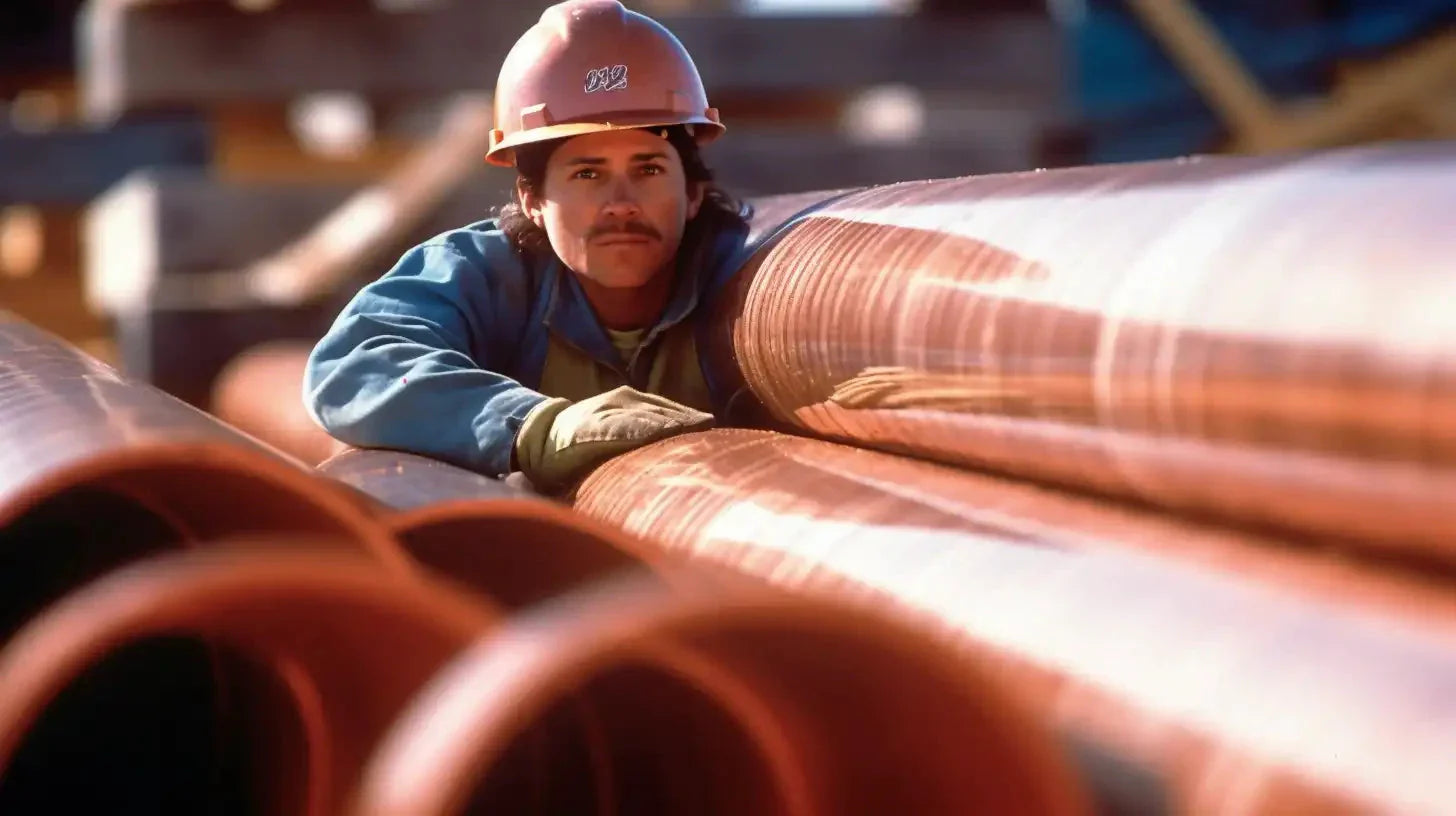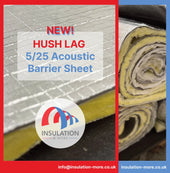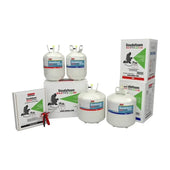The Importance of Pipe Insulation: Why Size Matters
If you're wondering why pipe insulation is necessary, then you're not alone. Many homeowners and property managers do not know the importance of pipe insulation. For starters, insulation helps prevent heat loss, keeping your energy bills low. It also prevents pipes from freezing in cold weather conditions. And, if that's not enough, insulation protects pipes from damage and corrosion.
Choosing the right size of pipe insulation is crucial to its effectiveness. A poorly fitted insulation can lead to energy loss and potential damage to your pipes. To determine the right size for your pipe, there are a few factors you need to consider.
The first factor is the diameter of your pipe. The diameter determines how much space the insulation will take up around it. The second factor is the thickness of the insulation itself – this affects how much heat it can retain or how much cold it can block out.
Another important consideration when choosing the size of your pipe's insulation is its operating temperature range. If your pipes carry hot water or steam, you'll need thicker and more robust insulation than if they were only used for cold water.
Understanding these factors will help you choose a well-fitting and efficient solution for your pipes' needs - regardless if it's for residential or commercial purposes. Having proper-sized pipe insulation helps keep energy costs manageable by preventing heat loss through insulated walls and floors while preventing damage caused by freezing temperatures or corrosive substances flowing through them while also protecting them against wear-and-tear over time.
Types of Pipe Insulation
Understanding the Different Types of Pipe Insulation Available
Pipe insulation comes in many different forms and each has its own advantages and disadvantages. When choosing insulation for your pipes, it is important to understand the differences between each type so that you can choose the one that best suits your needs.
Fiberglass Insulation
Fiberglass insulation is one of the most common types of pipe insulation available. It is made from small fibers of glass and comes in rolls or pre-formed sections. Fiberglass insulation is great for controlling both heat gain and heat loss. However, as with any fiberglass product, it can be irritating to skin and lungs when handled improperly. One downside to fiberglass insulation is that it can be difficult to install properly due to its structure, which does not always conform well to tight spaces or odd-shaped pipes. Additionally, it has a lower R-value (resistance value) than other types of insulation.
Foam Insulation
Foam insulation comes in two main types: open-cell foam and closed-cell foam. Open-cell foam is more porous and softer than closed-cell foam which makes it great for sound dampening applications but not as effective as an insulator as closed-cell foam. Closed-cell foam is much denser and provides excellent thermal resistance (R-value). It also resists moisture better than open-cell foam making it more durable over time. One potential drawback of closed cell-foam, however, is that it may be more expensive than other types.
Rubber Insulation
Rubber insulation comes in both flexible tubes and sheets. It has good resistance against temperatures ranging from -40°C up to 150°C which makes it perfect for pipes carrying hot water or steam systems where temperatures get really high. While rubber insulation provides excellent thermal protection, it can be difficult to work with due to its flexibility. It is also more susceptible to damage from UV rays and other environmental factors.
Reflective Foil Insulation
Reflective foil insulation is made of heat-reflecting materials that help prevent heat transfer by reflecting radiant energy back into the space it came from. It is not as effective at controlling heat transfer through conduction or convection like other insulations but can be a good option for certain applications where radiant energy is the main concern. Some benefits of reflective foil insulation include its lightweight nature and ease of installation. However, it must be installed properly with no gaps or crevices to maximize effectiveness.
Understanding the different types of pipe insulation available is crucial when selecting the right one for your needs. Factors such as cost, effectiveness, and durability should all be considered before making a final decision on which type best fits your needs and budget.
Measuring Pipe Size
The Importance of Accurate Measurements
Before you can choose the right size pipe insulation, you must know the size of your pipes. Accurate measurements are essential to ensure proper fit and optimal insulation performance. It is important to note that pipe size can refer to the internal diameter (ID) of the pipe or its outer diameter (OD). Knowing which your supplier is using is extremely important to purchasing the right insulation.
Tools Needed for Measuring Pipes
To measure your pipes, you will need a few tools. You’ll want a tape measure or ruler to determine length and a caliper or pipe measuring tool to accurately determine diameter.
Step-by-Step Guide on Measuring Pipes
1. Measure Length: The first step is measuring the length of your pipes from end to end.
2. Determine Diameter: Next, determine if your pipe has a round or oval shape as this will affect measurement accuracy. If it’s round use a caliper or measuring tool zeroed out at 0mm to get accurate measurements from opposite sides of the circle and find an average number in mm (millimeters). If it's oval shaped use calipers set at 0mm and measure each side from opposite points at both ends to find an average.
3. Convert Measurements: Use millimeters as they'll be easier for finding recommended insulation sizes later on.
4. Repeat these steps: Repeat these steps for each individual section of piping in your system. Remember that accuracy is key when measuring your pipes, so take note of any bends or curves in your piping system that may affect diameter measurements.
Inaccurate measurements can result in poorly fitting insulation leading to reduced energy savings and increased risk of condensation on cold pipes leading to mold growth inside walls which can be harmful if left unchecked over time.
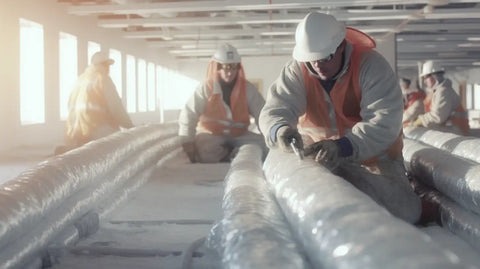
Choosing the Right Size Insulation
Now that we understand why it's important to insulate our pipes and what types of insulation are available, let's talk about choosing the right size. There are several factors to consider when selecting insulation, such as pipe diameter and thickness.
Factors That Determine What Size Insulation You Need
The first factor to consider is the diameter of your pipes. As a general rule of thumb, larger diameter pipes require thicker insulation. This is because a larger surface area leads to more heat loss, which means that more insulation is needed to maintain proper temperature levels.
You also need to take into account the thickness of your pipes. Thicker pipes will require more insulation than thinner ones because they have a higher thermal mass, meaning they can absorb and retain more heat energy. Additionally, thicker-walled pipes have a smaller inner diameter which can make it harder for insulation layers to fit around them.
Another important consideration is the temperature range at which you will be operating your pipes. If you'll be operating in extreme temperatures or in environments with high humidity or corrosive conditions, you may need thicker or specialty insulation to provide adequate protection from damage or breakdowns.
Sizing Chart for Different Pipe Diameters
A sizing chart can help simplify the process of choosing the right size insulation for your needs. Below is an example chart showing recommended sizes for various pipe diameters:
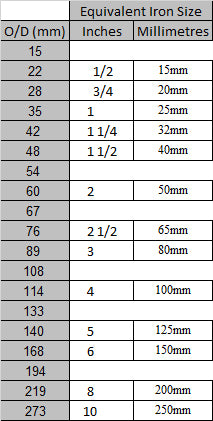
Installation Tips
Cutting and Fitting Techniques
Proper installation of pipe insulation is crucial in ensuring it provides maximum protection to your pipes. One of the most important steps in the installation process is cutting the insulation to fit your pipes accurately.
A common mistake people make is cutting the insulation too short, leaving gaps that can allow heat to escape or cold air to get in. To avoid this, measure your pipes carefully and add an extra inch or two before cutting your insulation. When fitting your pipe insulation, make sure it snugly wraps around the pipe without any gaps or spaces between it and the pipe surface. You may use duct tape or self-adhesive strips to seal any edges that are not fitting properly.
Additionally, when installing on irregularly shaped pipes, you may use a utility knife to cut small slits along one side of the insulation so that it can expand easily around bends and corners.
Mistakes during Installation
If you're not careful during installation, you may end up with a poorly insulated piping system that will cost you more money in energy bills than if there were no insulation at all.
One of the most common mistakes people make during installation is not properly cleaning their pipes before installing the insulation. Dirt and debris on your pipes can cause gaps between them and the insulation which will prevent proper sealing, causing energy loss.
Before insulating your pipes, ensure they are clean by wiping them down with a damp cloth or using a cleaning solution recommended by the manufacturer of your chosen type of pipe insulation.
Another mistake many homeowners make is choosing a lower R-value than what is needed for their specific climate zone conditions. To avoid this mistake, consult an expert or the manufacturer who can help you determine what R-value will provide maximum efficiency for your location's unique climatic conditions. Some people try to cut corners by using cheap insulation that is not of good quality. This is a mistake that can cost you more in the long run. Always choose high-quality insulation that meets your requirements and budget. It will be worth it in terms of energy efficiency and savings on energy costs.
Additional Considerations
Temperature Range
When choosing the right size pipe insulation, temperature range is an important factor to consider. Different types of insulation have different temperature ranges they can handle effectively. For example, if you need to insulate pipes that carry hot water or steam, you'll need insulation that can withstand high temperatures. On the other hand, if you need to insulate pipes that are exposed to low temperatures, such as those in unheated spaces like garages or basements, you'll need insulation that is designed to provide maximum thermal protection in cold environments.
It's also important to consider the potential for extreme temperature fluctuations in your area. If your pipes are exposed to drastic swings in temperature on a regular basis, you may need a more versatile type of insulation that can handle both ends of the spectrum.
Material Type
The material used for pipe insulation also plays a crucial role in determining what size is appropriate for your needs. There are several different types of materials available on the market today, each with its unique benefits and drawbacks. For example, fiberglass is one commonly used material for pipe insulation because it's affordable and provides excellent thermal protection. However, it can be difficult to work with and may require special safety precautions during installation.
Another popular option is foam rubber insulation which has high resistance against heat transfer and moisture absorption but is more expensive than other materials. Other options include mineral wool (which offers better fire resistance), polyethylene (which resists cracking), and cellular glass (which works well for extreme temperatures).
Examples of Scenarios
Here are some examples where specific types of pipe insulations would be preferred: - If you're looking for an affordable option suitable for most applications then fiberglass would be an ideal choice. - If you're looking for something easy-to-install with great thermal properties then foam rubber insulation is a solid choice. - For situations where there is a high risk of fire, mineral wool insulation would be preferred. - If you need to insulate pipes in extreme temperatures, such as those found in cryogenic applications or industrial plants, cellular glass insulation would be the best choice.
Conclusion
In this article, we have covered everything you need to know about choosing the right size pipe insulation. We started by discussing the importance of insulation and the different types available. We then went on to explain how to measure your pipes accurately and determine what size insulation you need. We also offered installation tips and additional considerations such as temperature range and material type.
It is important to choose the right size insulation for your pipes in order to maximize their energy efficiency, reduce heat loss, and prevent condensation buildup. By following the steps outlined in this article, you can make an informed decision that best matches your needs. Remember that not all pipes are created equal - some may require thicker or thinner insulation depending on their diameter, location, and intended use.
It is also important to consult with a professional or refer to manufacturer guidelines before making a final decision. By taking these necessary precautions when selecting pipe insulation, you can ensure that your pipes perform optimally while also reducing your energy bills and minimizing environmental impact.
By investing time into learning about proper pipe insulation sizing techniques, you are taking a proactive step towards reducing energy waste in your home or business. Not only will this help you save money on utility bills over time, but it will also reduce your carbon footprint.
Imagine being able to enjoy warm showers without worrying about water damage or mold growth due to excess condensation buildup! With proper pipe insulation sizing techniques under your belt, these worries can become a thing of the past. So let's take some time today to measure our pipes correctly and choose the right size insulation - not only for our own benefit but for that of our planet too!

